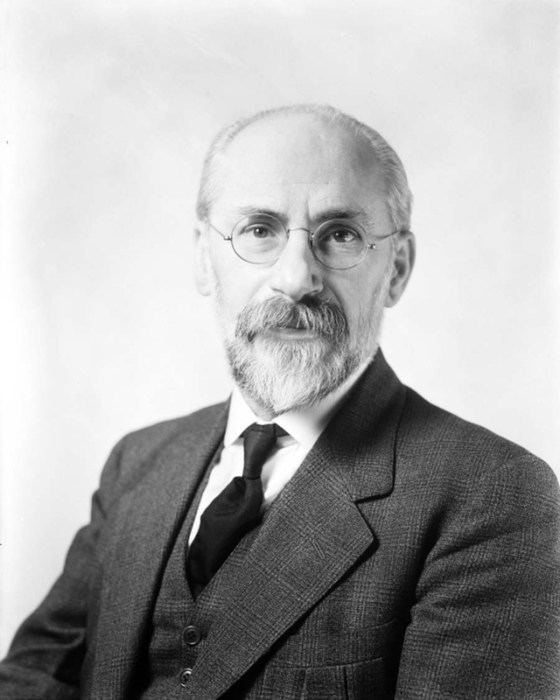Citizenship United States Name George Biesbroeck Residence United States of America | Fields astronomy Role Astronomer | |
 | ||
Born January 21, 1880Ghent, Belgium ( 1880-01-21 ) Nationality Belgium - United States Died February 23, 1974, United States of America Similar People Karl Schwarzschild, August Kopff, George Ellery Hale | ||
George A. Van Biesbroeck (or Georges-Achille Van Biesbroeck, January 21, 1880 – February 23, 1974) was a Belgian–American astronomer. He worked at observatories in Belgium, Germany and the United States. He specialized in the observation of double stars, asteroids and comets. He is notable for his long career as an observational astronomer.
Contents
Life
He was born in Ghent, Belgium on January 21, 1880 to a family of artists. At his father's request he pursued, and in 1902, he received, the 1st degree of Civil Engineering Construction and began work as a civil engineer for the Brussels Department of Roads and Bridges. But his true vocation is not there, it was astronomy, and while performing his official duties as a civil engineer he joined volunteers at the Uccle Observatory. In 1904 he left civil engineering behind and joined the staff at the Royal Observatory of Belgium at Uccle.
He then enrolled at Ghent University and obtained a degree in theoretical astronomy. He worked at the Heidelberg Observatory, then at the Potsdam Observatory under the direction of Max Wolf, Karl Schwarzschild and others.
In 1915, as World War I was raging, he was invited to come to work at Yerkes Observatory. He and his family made the dangerous trip across wartime Europe and settled permanently in the United States. He became a U.S citizen in 1922. He then began his work on double stars, comets, asteroids, and variable stars. In 1945 he was forced into retirement at Yerkes at the age of 65. Relieved of administrative duties, he became an even more active observer at Yerkes and at the McDonald Observatory. He made the frequent automobile trips between the observatories in Wisconsin and Texas without complaint.
He participated in numerous physically grueling astronomical expeditions to remote parts of the world throughout the late 1940s and 1950s. In 1952, at age 72, he traveled to Khartoum in Sudan and set up a 20' telescope to confirm Einstein's Theory of Relativity by noting the change in positions of the stars around the Sun during a total eclipse that year. His measurements were in agreement with Einstein's predictions. His travels to Sudan were the subject of a Time Magazine article.
Discoveries
He discovered the periodic comet 53P/Van Biesbroeck, as well as two non-periodic comets: C/1925 W1 (Van Biesbroeck 1) and C/1935 Q1 (Van Biesbroeck 2).
He also discovered sixteen asteroids between 1922 and 1939 (see adjunct table).
In 1961 he published the Van Biesbroeck's star catalog. In this he cataloged a number of very faint stars, known by the VB numbers he assigned to them upon discovery. One notable star he discovered was the very small red dwarf secondary star, VB 10, also known as Gliese (GJ) 752B, of the primary star, Wolf 1055 (Gliese (GJ) 752A). This star was unique in that its absolute magnitude of 19 was the lowest of any star then known and still thought to be the lowest possible for any star. VB 10 was given the designation of Van Biesbroeck's Star to honor him for this work and his work with double stars.
Later life and death
In 1963 he came to the Lunar and Planetary Laboratory of the University of Arizona in Tucson Arizona to work under Gerard Kuiper. There he used his practical skills as a land surveyor to site the new Catalina Station now under the direction of Steward Observatory and that now houses the 1.6m Kuiper Telescope. He continued to observe and make contributions to astronomy up to a few months before his death. New scientific papers continued to be published under his name for several years afterward. He died on February 23, 1974 at the age of 94.
Honors and awards
Throughout his long and productive life he received may honors. This is a partial list.
Objects named for Van Biesbroeck
The George Van Biesbroeck Prize
The George Van Biesbroeck Prize, awarded by the American Astronomical Society, is named in his honor. The prize is a lifetime achievement award given to astronomers who have contributed long-term extraordinary or unselfish service to astronomy.
